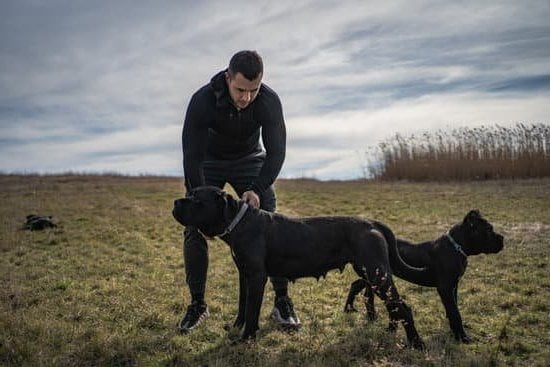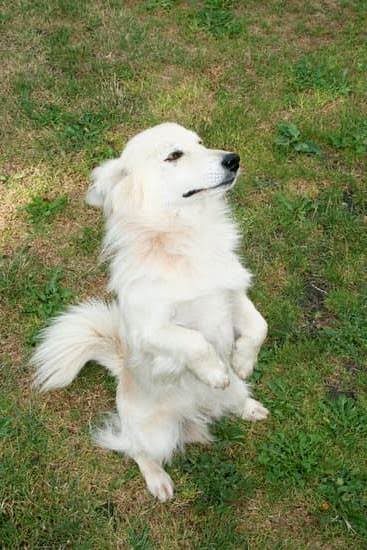Litter training your dog is an essential skill that can make life easier and cleaner for both you and your furry friend. In this article, we will explore the step-by-step process of how to litter train your dog, from choosing the right litter box to overcoming common challenges and eventually transitioning to outdoor elimination. Understanding the importance and benefits of litter training is the first step towards a successful and harmonious relationship with your pet.
Litter training provides numerous benefits, such as convenience, cleanliness, and flexibility for pet owners who live in apartments or places without easy access to outdoor areas. Additionally, it can be especially helpful for elderly or disabled individuals who may have difficulty taking their dogs outside multiple times a day. By learning how to litter train your dog, you can create a comfortable and hygienic environment for them while also preventing accidents and damage to your home.
One of the key aspects of successful litter training is choosing the right litter box for your dog. This includes considering factors such as size, material, and placement to ensure that your pet feels comfortable using it. Through this introductory section and subsequent sections in this article, we will provide you with a comprehensive guide on how to effectively introduce your dog to their new elimination area and maintain a successful litter training routine.
Choosing the Right Litter Box for Your Dog
When it comes to litter training your dog, one of the most crucial aspects is choosing the right litter box. The size, material, and placement of the litter box all play a significant role in ensuring that your dog successfully learns to use it for elimination.
First and foremost, consider the size of your dog when selecting a litter box. It should be spacious enough for your pet to comfortably enter, turn around, and squat without feeling cramped. Additionally, take into account the height of the sides – they should be low enough for easy access but high enough to prevent any accidents or spills.
The material of the litter box also matters. Many dog owners find that plastic litter boxes are durable and easy to clean, making them a popular choice. However, some dogs may have allergies or sensitivities to certain materials, so consider this factor when making your decision.
Lastly, the placement of the litter box is essential for your dog’s comfort and ease of use. Choose a quiet and accessible area in your home where your dog can use the box without feeling stressed or interrupted.
| Aspect | Consideration |
|---|---|
| Size | The litter box should be spacious enough for the dog to comfortably enter |
| Material | Plastic is durable and easy to clean but consider any allergies or sensitivities |
| Placement | Choose a quiet and accessible area in your home |
Step-by-Step Guide to Introducing Your Dog to the Litter Box
Introducing your dog to the litter box can be a challenging but rewarding process. By following a step-by-step approach, you can make the transition easier for both you and your furry friend. Here are some essential steps to help you successfully introduce your dog to the litter box.
Familiarizing Your Dog With the Litter Box
Start by placing the litter box in a quiet and accessible area of your home. Allow your dog to explore and sniff around the box so they can get familiar with it. You can also place some treats or toys near the litter box to create a positive association.
Encouraging Positive Associations
When your dog shows interest in the litter box, encourage them with praise and rewards. This will help them associate positive feelings with the box, making them more likely to use it when nature calls.
Guiding Your Dog to Use the Litter Box
If your dog shows signs of needing to go potty, gently lead them to the litter box. You can also use verbal cues or commands to encourage them to use the box. If they do their business in the designated area, be sure to reward them with praise and treats to reinforce this behavior.
By following these steps and being consistent with training, you can help your dog successfully adapt to using a litter box for their elimination needs. Remember that patience and positive reinforcement are key components of successful litter training for dogs.
Patience and Persistence
When it comes to litter training your dog, patience and persistence are key. Just like any other form of training, it will take time for your dog to understand what is expected of them. Consistent training and positive reinforcement are essential in ensuring that your dog learns to use the litter box effectively.
One important tip for consistent training is to establish a routine for your dog. Dogs thrive on routine, so feeding them at the same times each day, as well as taking them to the litter box at regular intervals, can help them understand when and where they should eliminate.
Additionally, be patient with your dog if they don’t immediately take to using the litter box. It may take some time for them to get used to the idea, especially if they have been used to eliminating outdoors their whole lives.
Positive reinforcement is another crucial aspect of litter training. Whenever your dog uses the litter box correctly, be sure to praise and reward them with treats or affection. This positive association will encourage them to continue using the litter box.
On the other hand, avoid scolding or punishing your dog if they have accidents or refuse to use the litter box initially. This can create fear or anxiety around elimination which can impede their progress in learning how to use the litter box.
Remember that every dog is different, and it may take varying amounts of time for each individual dog to become fully trained in using a litter box. Stay patient with your pet and remain persistent in your efforts, and eventually you will see success in their ability to use the litter box consistently.
| Training Tip | Description |
|---|---|
| Establish a Routine | Consistency in feeding times and regular trips to the litter box help dogs understand when and where they should eliminate. |
| Positive Reinforcement | Praising and rewarding your dog when they use the litter box correctly encourages them to continue this behavior. |
| Patience and Persistence | Every dog learns at their own pace; staying patient and persistent in training efforts is essential. |
Common Challenges and How to Overcome Them
When it comes to litter training your dog, you may encounter some common challenges along the way. It’s important to be prepared for accidents, refusal, and fear as you work with your furry friend to adapt to the litter box. Here are some tips for overcoming these challenges:
1. Accidents: It’s normal for dogs to have accidents during the litter training process. If your dog has an accident outside of the litter box, avoid scolding them as this can create fear or anxiety around the training process. Instead, clean up the mess quickly and continue with your training routine. Using positive reinforcement when your dog eliminates in the correct place can help reduce accidents over time.
2. Refusal: Some dogs may initially refuse to use the litter box, especially if they are used to eliminating outdoors. To encourage acceptance of the litter box, you can try placing familiar items, such as their toys or a piece of their bedding, near or in the box. Additionally, using treats and praise when they display interest in or use the litter box can help reinforce positive behavior.
3. Fear: Dogs may exhibit fear or anxiety towards using a litter box if they are not accustomed to it. This can be overcome by gradually introducing them to the litter box in a calm and gentle manner. Avoid forcing them into the box or creating stressful situations around it. Patience and consistency will help build their confidence over time.
By addressing these common challenges with patience and positive reinforcement, you can help your dog successfully adapt to using a litter box for elimination. Remember that every dog is unique, so it may take time and adjustments to find what works best for your furry companion.
Maintenance and Cleanliness
Regular Cleaning
To ensure that your dog continues to use their litter box, it is crucial to keep it clean and fresh at all times. Scoop out waste at least once a day and replace the litter entirely every 1-2 weeks, depending on how many dogs are using the box.
Choosing the Right Litter
The type of litter you use can also make a significant difference in how your dog perceives their litter box. Some dogs may have preferences for certain textures or scents, so it may take some trial and error to find the right litter for your pet.
Location Matters
Where you place the litter box is also important in maintaining its appeal to your dog. Choose a quiet, easily accessible spot in your home where your dog feels comfortable and safe. Avoid placing it near their feeding area or in high-traffic areas where they may be disturbed while using it.
By ensuring that the litter box is clean, using the right kind of litter, and placing it in an appropriate location, you can help maintain its appeal to your dog and encourage consistent use.
Adjusting for Long-Term Success
Litter training your dog is a process that requires patience and consistency. Once your dog has become accustomed to using the litter box, it’s important to begin the transition from indoor elimination to outdoor elimination. This step is crucial for long-term success and will ensure that your dog can effectively relieve themselves when outdoors. Here are some steps to help you make this adjustment smoothly:
1. Introduce Your Dog to the Outdoors: Start by taking your dog outside regularly, especially after meals and naps. Allow them to become familiar with the sights, sounds, and smells of the outdoor environment.
2. Positive Reinforcement: When your dog successfully eliminates outdoors, provide plenty of praise and rewards. This will help them associate outdoor elimination with positive experiences.
3. Gradual Reduction of Indoor Access: As your dog becomes more comfortable with outdoor elimination, gradually reduce their access to the indoor litter box. This could mean moving the litter box closer to the door or restricting access to certain times of the day.
By following these steps and being consistent with your training, you can effectively transition your dog from using a litter box indoors to relieving themselves outdoors. Remember that every dog is different, so be patient and understanding as they adjust to this new routine.
Additional Tips and Resources for Successful Litter Training
In addition to the step-by-step guide and tips for litter training your dog, there are additional resources and tools that can help you achieve success with this training process. One of the most valuable resources is professional help from a dog trainer or behaviorist who specializes in house training. They can provide personalized guidance and support based on your dog’s specific needs and behaviors, ultimately making the training process more effective and efficient.
Another useful tool for successful litter training is the use of training aids such as attractant sprays or pheromone diffusers. These products are designed to encourage dogs to use their designated elimination area, making it easier to establish the desired behavior. Additionally, using these aids can help reduce accidents and speed up the learning process for your dog.
Finally, familiarizing yourself with frequently asked questions (FAQs) about litter training can provide valuable insights and solutions to common issues that may arise during the training process. Understanding potential challenges and how to address them will better prepare you for long-term success in litter training your dog.
Keep in mind that every dog is different, so being knowledgeable about various techniques and resources will ultimately contribute to a successful outcome. By taking advantage of these additional tips and resources, you can approach litter training with confidence and set your dog up for success in maintaining proper elimination habits indoors.
Frequently Asked Questions
How Long Does It Take to Litter Train a Dog?
The time it takes to litter train a dog can vary depending on the dog’s age, breed, and individual temperament. Generally, it can take anywhere from a few weeks to several months to successfully litter train a dog. Consistency, patience, and positive reinforcement are key factors in the training process.
Is Litter Box Training a Dog a Good Idea?
Litter box training a dog can be a good idea for certain situations, such as for small breeds or for dogs living in high-rise buildings or urban areas where access to outdoor potty areas may be limited. However, it’s important to consider the individual needs and preferences of the dog, as some dogs may not adapt well to using a litter box.
It’s also essential to maintain cleanliness and regular maintenance of the litter box to ensure success with this method.
How Do You Stop a Dog From Peeing and Pooping in the House?
To stop a dog from peeing and pooping in the house, it’s crucial to start by identifying the underlying cause of the behavior, whether it’s due to incomplete house training, separation anxiety, medical issues, or territorial marking. Once the cause is determined, addressing it through proper training, behavioral modification techniques, providing regular potty opportunities outside, and reinforcing positive potty habits are all important steps in stopping this unwanted behavior.
Consistency and patience are key when working on house soiling issues with dogs.

Welcome to the blog! I am a professional dog trainer and have been working with dogs for many years. In this blog, I will be discussing various topics related to dog training, including tips, tricks, and advice. I hope you find this information helpful and informative. Thanks for reading!





